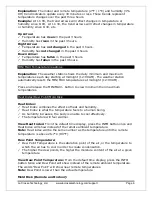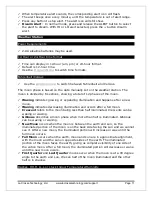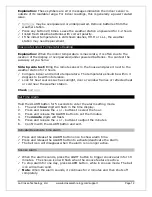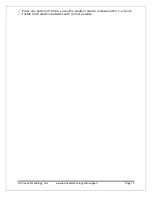
La Crosse Technology, Ltd. www.lacrossetechnology.com/support
Page 11
When temperature alert sounds, the corresponding alert icon will flash.
The alert beeps once every minute, until the temperature is out of alert range.
Press any button to stop alert. The alert icon will still show.
Disarm Alert: In normal mode, press and release the ALERT button to select
the alert to disarm. With HI or LO alert selected, press the − button disarm
alert.
Weather Station
Power Requirements
2-AA alkaline batteries may be used.
12-Hour or 24-Hour time format
Time can display in 12-hour (am, pm) or 24-hour format.
Default is 12-hour time.
Use the
to switch time formats.
Fahrenheit/Celsius
Use the
to switch between Fahrenheit and Celsius.
The moon phase is based on the date manually set on the weather station. The
moon is divided by 6 sections, showing a total of 12 phases of the moon.
Waxing indicates growing or expanding illumination and happens after a new
moon.
Waning indicates decreasing illumination and occurs after a full moon.
Crescent refers to the moon being less than half illuminated. Crescents can be
waning or waxing.
Gibbous describes a moon phase when more than half is illuminated. Gibbous
can be waxing or waning.
New Moon occurs when the moon is between the earth and sun, so the
illuminated portion of the moon is on the back side facing the sun and we cannot
see it. After a new moon, the illuminated portion will increase or wax until the
full moon occurs.
Full Moon occurs when the earth, moon and sun are in approximate alignment,
with the moon and the sun on opposite sides of the earth. The illuminated
portion of the moon faces the earth, giving us complete visibility of one side of
the entire moon. After a full moon, the illuminated portion will decrease or wane
until the new moon occurs.
First Quarter and Last Quarter moons occur when the moon is at a 90 degree
angle to the earth and sun. We see half of the moon illuminated and the other
half is in shadow.
Dashes, HH.H, LL.L or stuck Indoor Temperature/Humidity

































